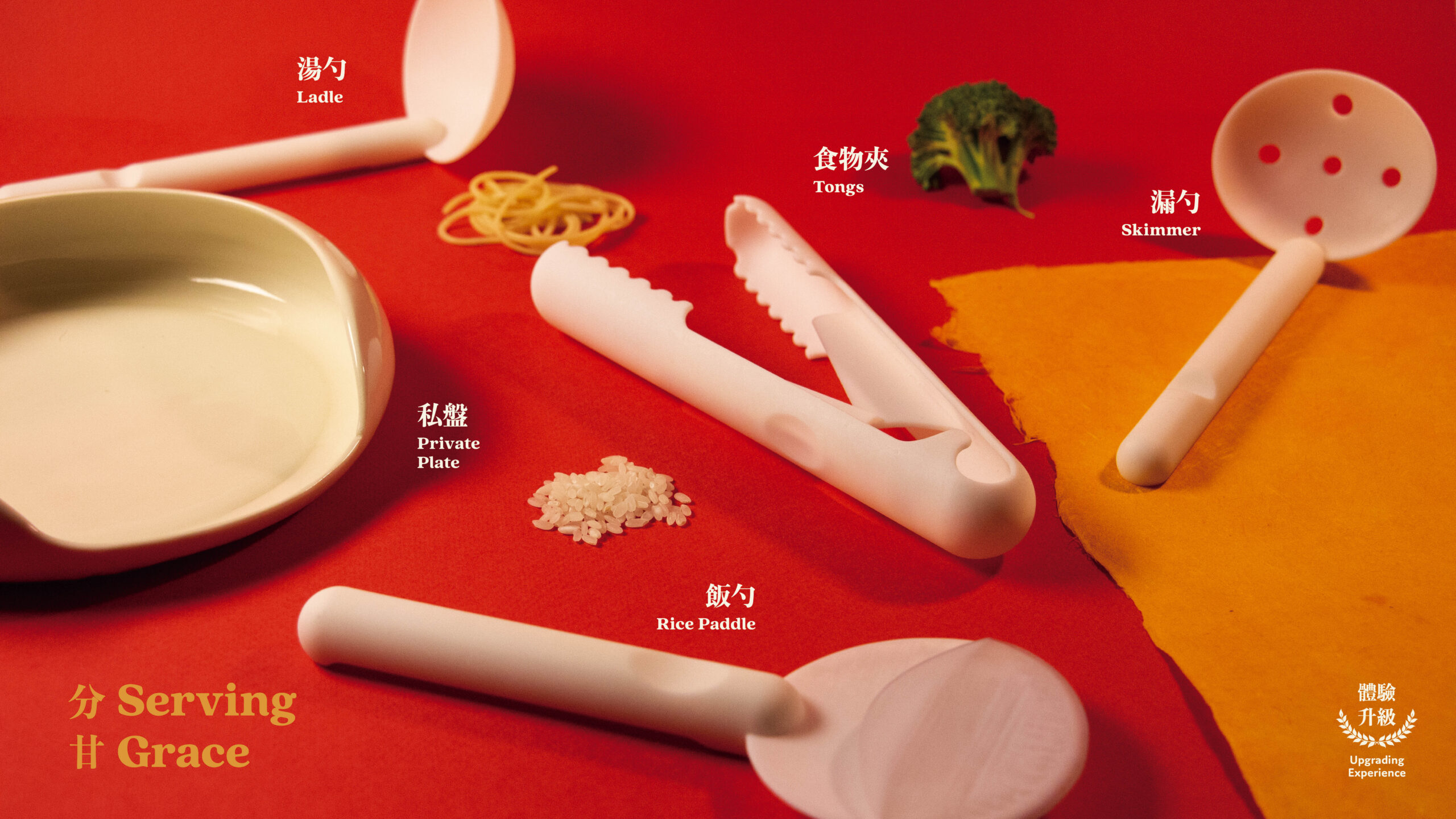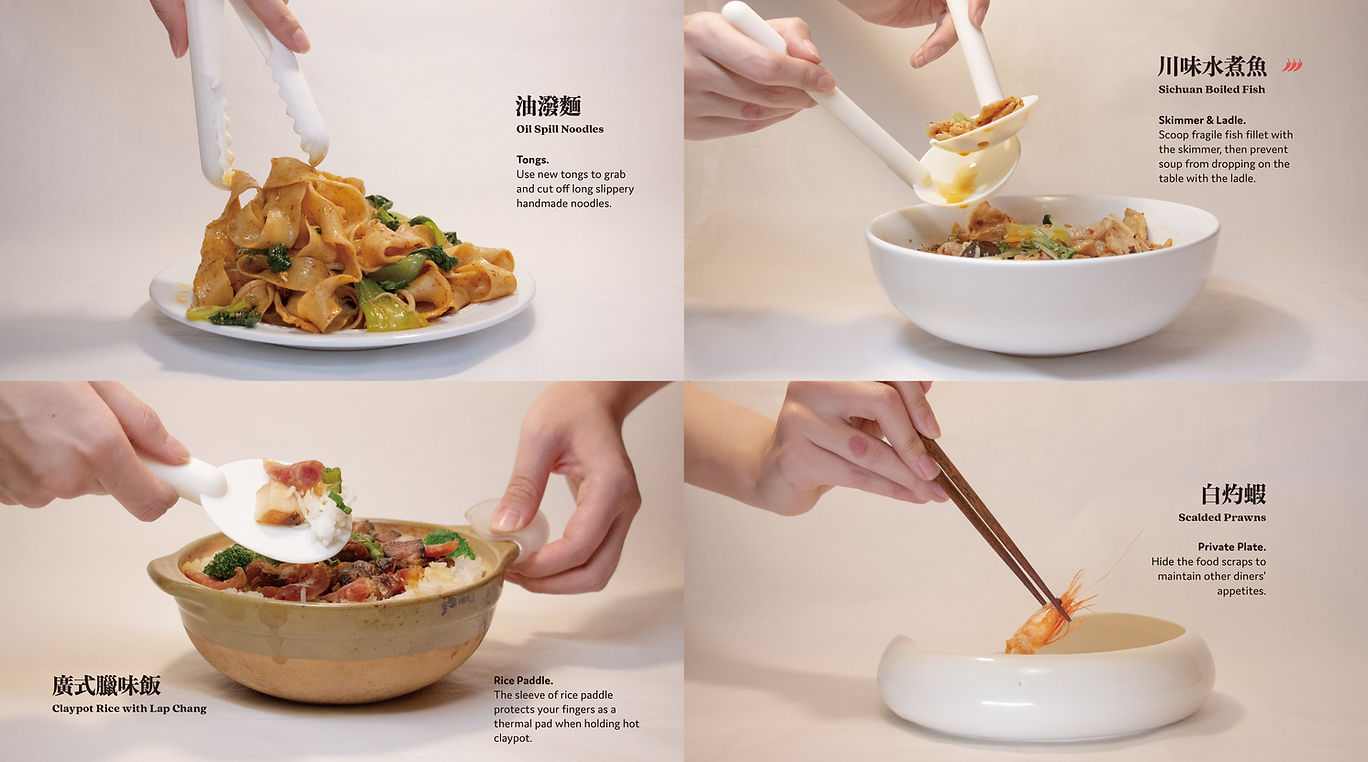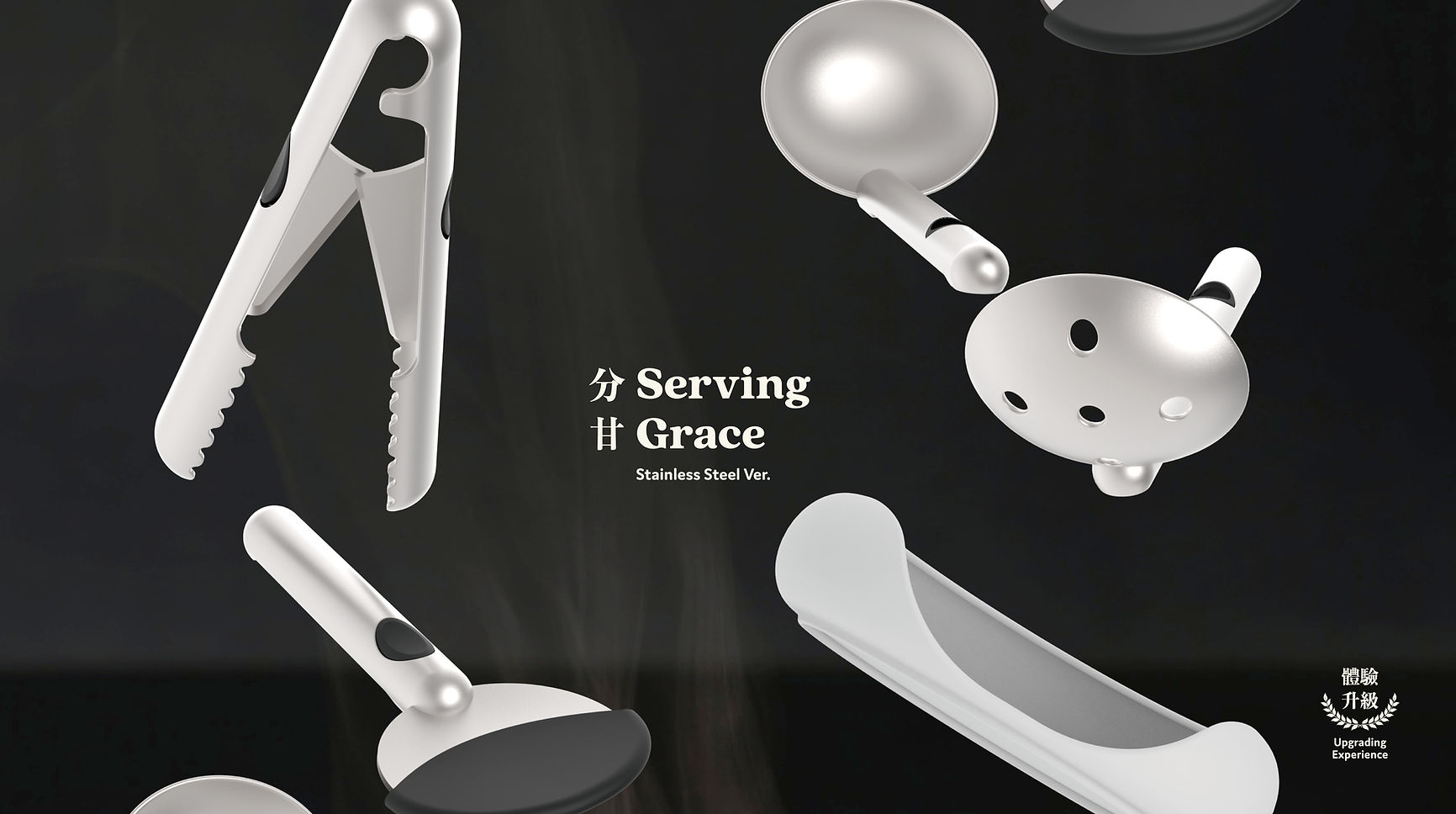Serving Grace – Infections using traditional share-dishes in Asia

How can the communal dining experience be enhanced?
Share-dishes communal dining is a typical Chinese way of eating together: In a feast, each diner takes food from the same plate and enjoys it with their chopsticks. Unfortunately, the share-dishes communal dining lets gastric germs spread on the dining table. Over 50% Chinese population has been infected by Helicobacter pylori, which causes 4-6 times the incidence of gastric cancer in the patient than in a normal person.
How can we let diners change their eating behaviors to adopt serving utensils? Based on the research, I learned: People change their behaviors not because it is good for them,
but because they will look good if they do. So a set of serving utensils specially designed for Chinese dishes to help diners eat elegantly and look good would be a successful strategy.

The new tongs has a scissors structure helping diners cut off long slippery stripes effortlessly. The sleeve of the rice paddle protects diners’ hands from being injured by a hot clay pot. The skimmer and ladle match each other to prevent dropping sauce on the dining table. Moreover, a redesigned private plate is used to hide food scraps and maintain the excellent appetite of other diners.

Considering the variety of interior and tableware styles of Asian dining, more material and color options are provided. The white thermal plastic version can adopt the relaxing at-home dining style, and this stainless steel version fits the dine-out style best.
